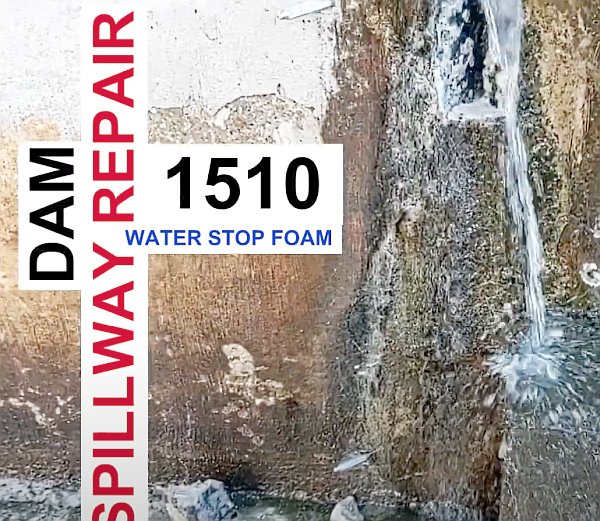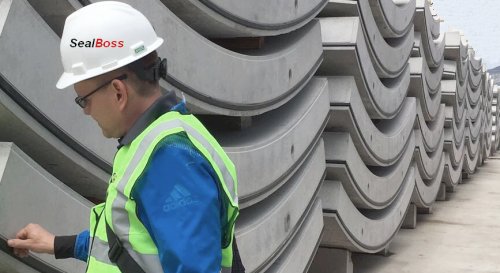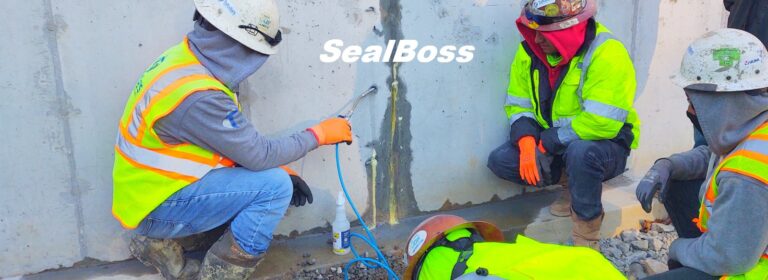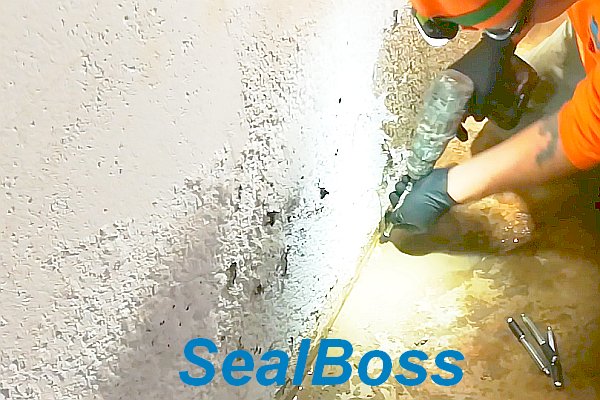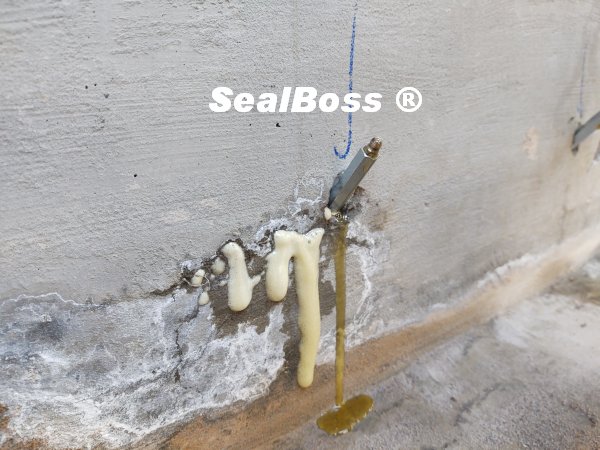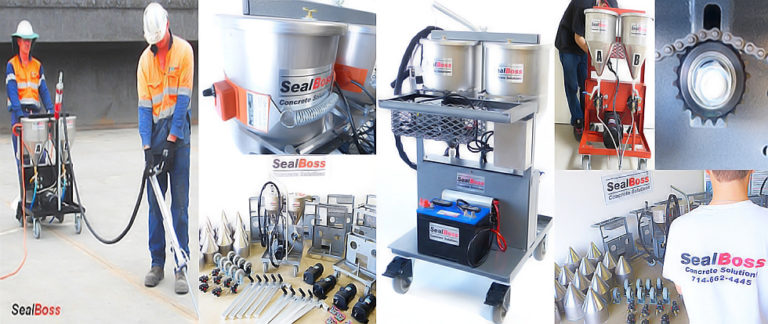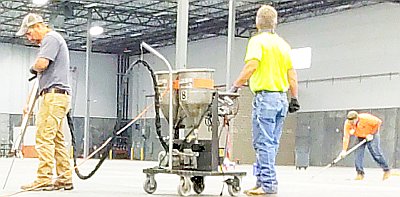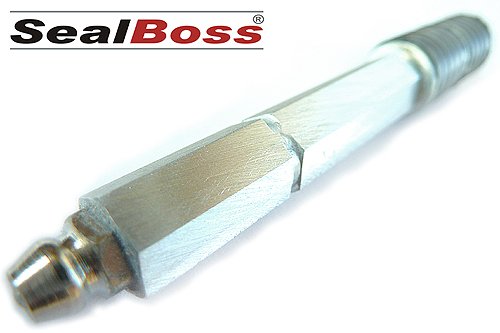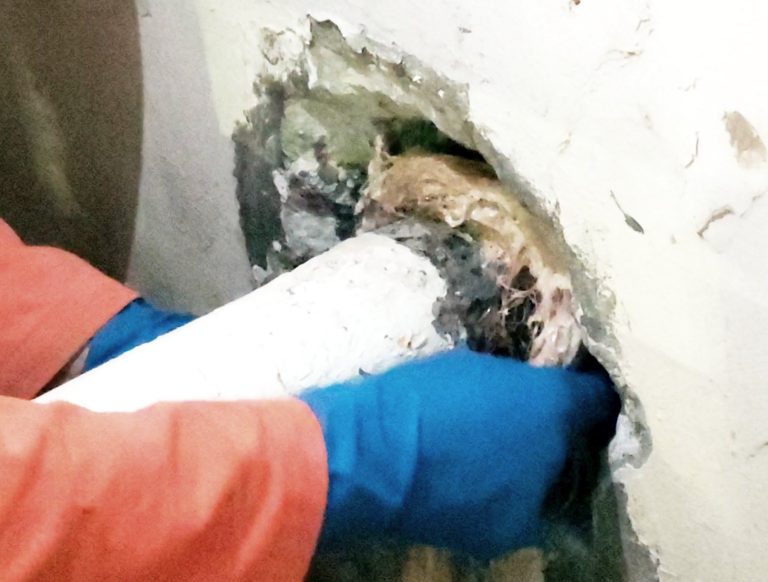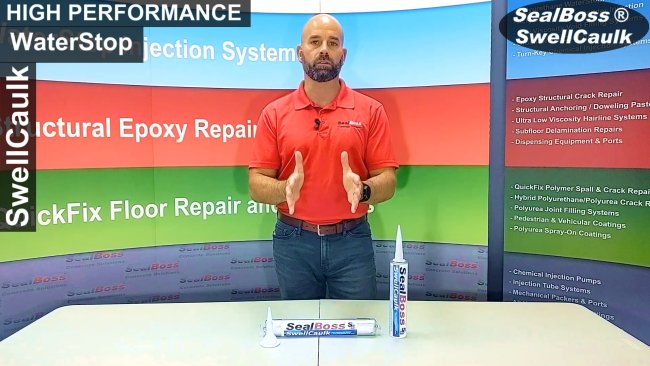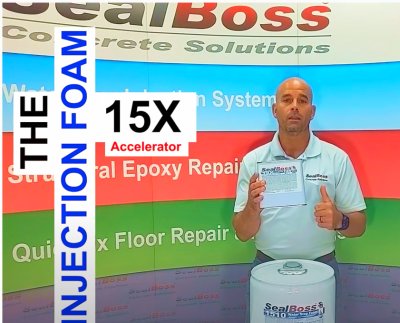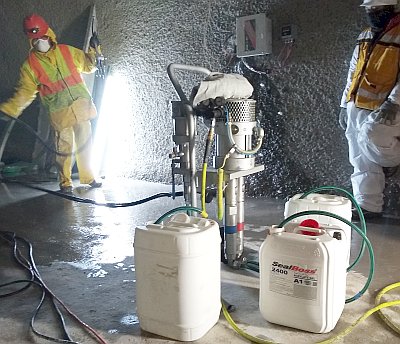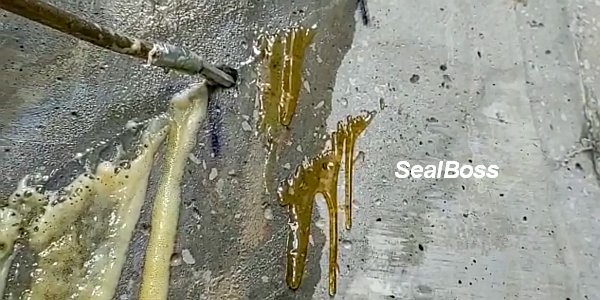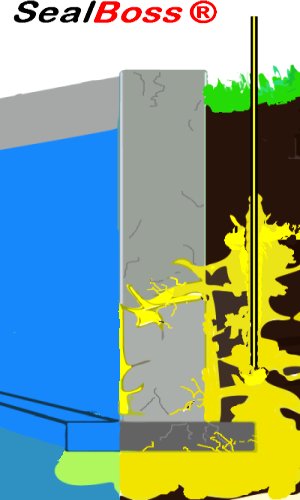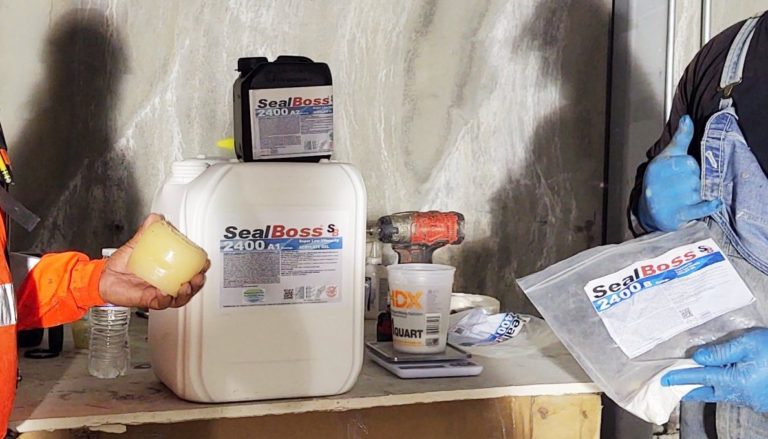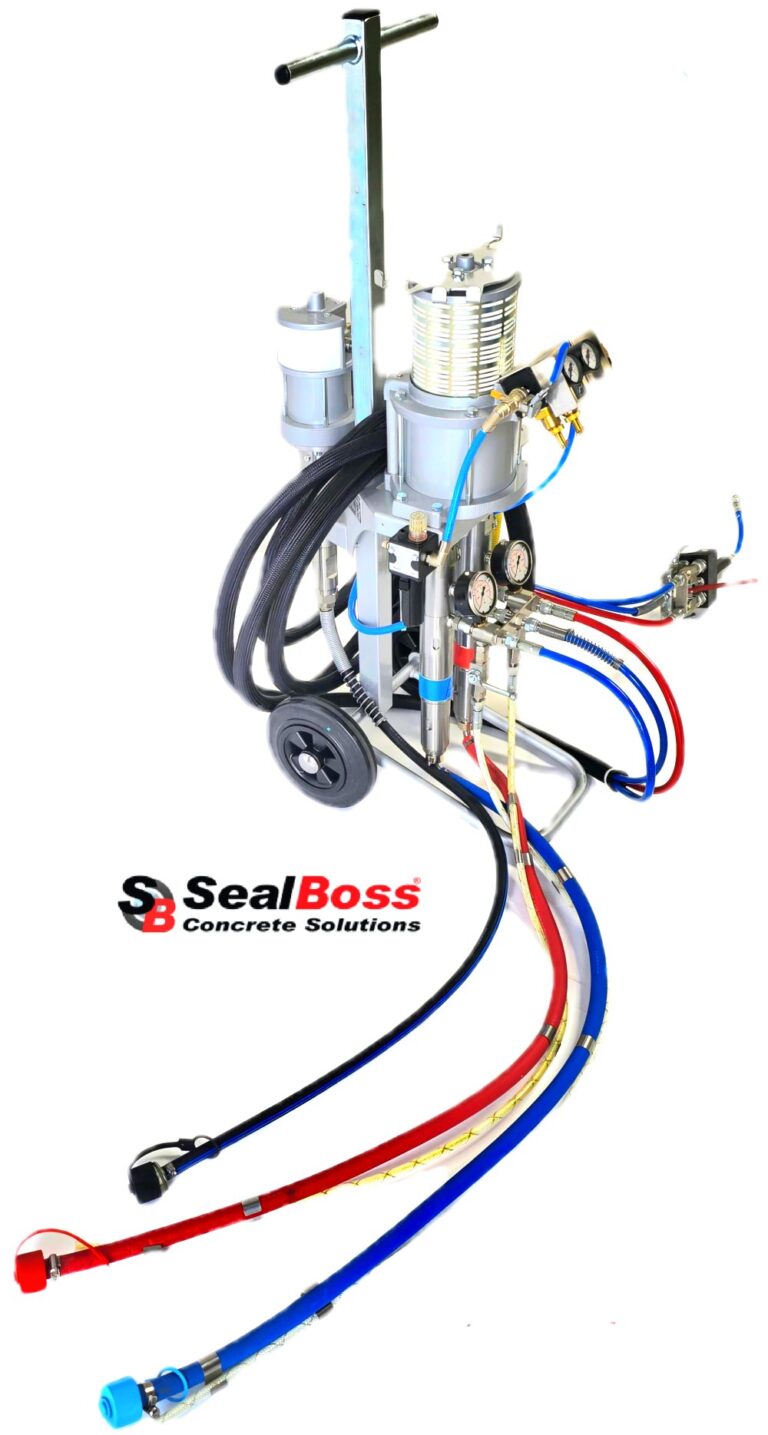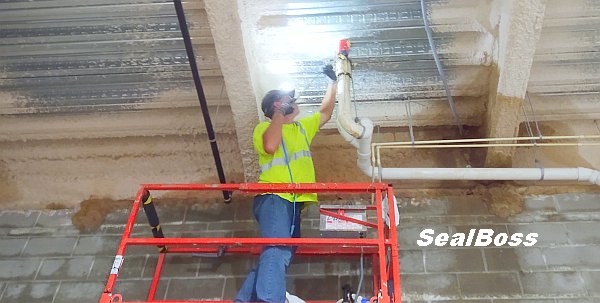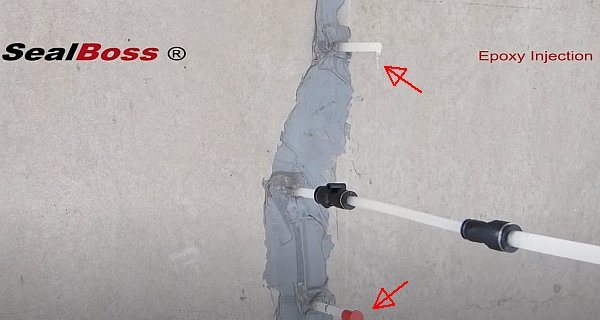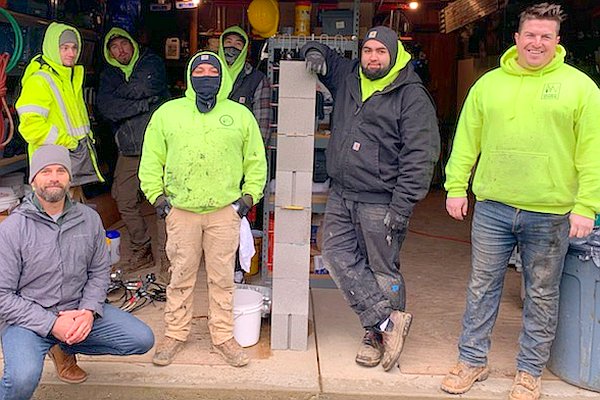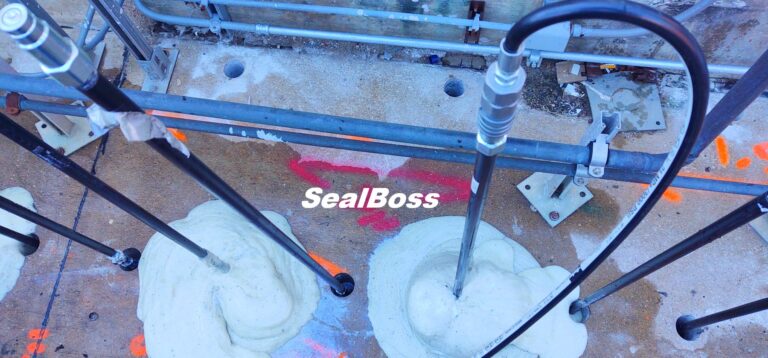Leaky Basement Repair
Leaking Basement Repair Injection System
Home Leak Repair
Introduction
Water damage in a basement can harm your home’s value and safety. Leaks lead to mold, pests, and structural issues. SealBoss Leak Sealing Foam injection is an effective solution, sealing cracks and joints to create a watertight barrier. This article details a case study using this method to permanently fix basement leaks, offering a reliable approach for homeowners and contractors.
How to Fix a Leaky Basement
Water damage is a serious issue that can have devastating effects on your home. Not only does it decrease the value and livability of your property, but it can also compromise the structural integrity of your home. A leaky, damp basement is particularly concerning, as it creates a breeding ground for harmful mold and bacteria that can cause health issues for you and your family.
In addition, a damp basement can attract pests such as termites and rodents, causing further damage and infestations. It’s crucial to address any water damage in your basement as soon as possible to avoid these issues and prevent them from escalating. With the right tools and procedures, you can successfully mitigate basement leaks and protect your home from further damage.
Cracks and Cold Joints are Known Areas for Basement Leaks to Occur
Unsealed cracks and cold joints in your basement, or any below grade spaces, can be a major source of water damage, as they provide an easy pathway for water to enter your home. This can result in flooding, which not only damages your belongings but also compromises the structural integrity of your home. In addition to damaging walls, coverings, furniture, and storage items, water can also cause electrical hazards and increase the risk of fires.
Common Causes for Concrete Foundation Leaks and Wall Cracks
Concrete wall cracks, especially in basements, can be caused by a variety of factors that compromise the integrity of the structure and allow water intrusion. Here are some common causes:
- Inadequate Construction
– Insufficient Material Quality: Using substandard materials or improper mixing ratios can weaken the concrete, making it more prone to cracking.
– Poor Waterproofing: In new homes, improper waterproofing techniques can lead to leaks and cracks. - Deteriorating and Stressed Concrete
– General Wear and Tear: Over years, concrete naturally deteriorates due to environmental factors, resulting in the formation of cracks.
– Thermal Expansion and Contraction: Exposure to repeated cycles of heating and cooling causes concrete to expand and contract, leading to cracks over time. - Soil Related Problems
– Low Compaction and Consolidation: Inadequately compacted soil beneath the foundation can shift, leading to structural instability.
– Erosion: Water erosion can wash away the soil supporting the foundation, causing it to settle unevenly and crack.
– Freeze/Thaw Cycles: Water in the soil can freeze and expand during cold weather, then thaw and contract in warmer conditions. This cycle exerts pressure on the foundation, causing it to crack.
How do I Stop my Basement from Leaking?
There are many methods to mitigate basement leaks. The construction of the basement and environmental factors have to be considered when choosing the right products and procedures, and it is always advised to consult a professional in the process.
One solution that has been successfully used for over thirty years is the SealBoss Leak Sealing Foam injection system. This system seals leaking basement cracks and cold joints by injecting a foam that expands to fill and seal the gaps, creating a watertight barrier. This method is effective, long-lasting, and cost-efficient, making it a popular choice for homeowners and contractors alike.
Leaky Basement Repair – Joint and Void Filling Injection
Scope
A homeowner faced persistent basement leakage through cold joints where the wall meets the floor.
Previous repair attempts by a contractor using crystalline products and epoxy coatings had failed, resulting in water pooling on the floor after heavy rains.
In search of a permanent solution, the homeowner sought to prevent further water intrusion into the basement.
Leaky Basement Repair – Detail
A SealBoss technical representative was called to provide expertise on sealing the basement leaks.
Upon careful examination of the job site, it was discovered that the basement floor was approximately 8 inches thick and was poured slightly deeper towards the walls. The source of the leakage was identified as the cold joint between the wall and the poured slab.
Repair System
SealBoss 1510 Water Stop Foam was chosen as the preferred leak sealing injection product to provide a permanent solution. The product would be injected through SealBoss injection packers using the SealBoss P2002 injection machine, a compact, lightweight, and quiet pump ideal for this application.
Procedure
1. Drilling the Slab
- The slab was drilled with half-inch holes spaced one foot apart, parallel to the wall, and ten inches from the wall.
- The holes were drilled at a 90-degree angle and full depth into the slab.
- After drilling each hole, the presence of heavy substrate saturation along the wall was confirmed by water filling the hole, indicating a void beneath the slab that needed to be filled with foam during the injection process.
2. Setting the Packers
- Once all the holes were drilled, packers were placed at half depth and only hand-tightened for easy removal during injection.
- The injection process began on the side closest to the crawl space’s stub foundation wall.
- The first packer was loosened, placed at full depth, and retightened, while the next packer in line was removed to allow for a path of less resistance for any displaced water or soil to escape from below and provided visibility for material travel.
3. Injection Process:
- Each packer was injected until catalyzed foam was observed coming out of the adjacent hole.
- The packer was reinjected a second or third time until refusal or sufficient pressure buildup.
Leaky Basement Repair – Conclusion
This combined joint injection and void filling injection procedure proved to be the most effective method for sealing the basement leaks
efficiently and permanently. The use of SealBoss 1510 Water Stop Foam, along with precise drilling and injection techniques, ensured that the cold joints and voids were thoroughly sealed, providing a lasting solution to prevent water intrusion.
Additional Tips for Homeowners and Contractors
- Regular Inspection:
Periodically inspect basements, especially after heavy rains, to detect early signs of leakage. - Proper Drainage:
Ensure proper exterior drainage systems, such as gutters and downspouts, are in place to divert water away from the foundation. - Professional Consultation:
Consult with experienced professionals for thorough assessments and tailored solutions for basement waterproofing.
By following these steps and employing advanced sealing techniques, homeowners and contractors can effectively address and prevent basement leakage, ensuring a dry and secure living space.
Materials and Tools Used
- SealBoss 1510 Leak Sealing Foam
- SealBoss 15X Accelerator
- SealBoss 13-100 Evolution Packers
- SealBoss R70 Pump Cleaner
- SealBoss P2002 Injection Machine
Leaky Basement Repair Related Articles
- Basement Leak Sealing & Structural Repair Methods – Wet and Dry
- Leaky Basement Crack Repair
- Leaking Basement Repair Kit Application & Pictures
- Leaking Basement Repair Training & Video
- Curtain Injection Pictures and Podcast
Learn More
Feel free to contact us at 714-662-4445 if you have any inquiries, or simply fill out our request form for us to get back to you. Our team is eager to assist you in finding the right solution for your needs. In addition, we offer on-site support from our expert and experienced technical representatives, which can be arranged upon request.































